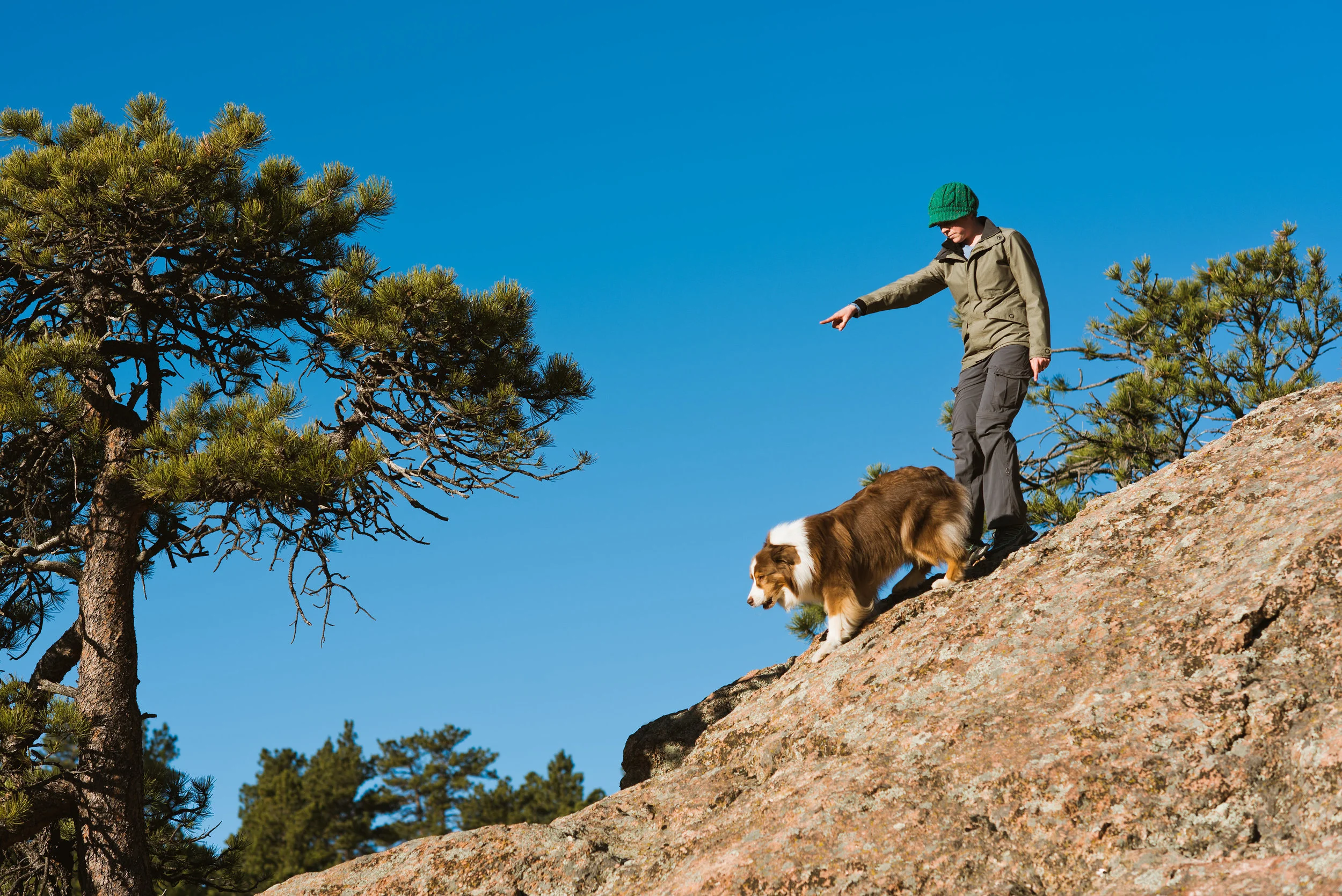The holidays are here! Lots of fun and family and good food will be taking place over the next month, and everything is all hustle and bustle and cheer . . .
Until the dog counter-surfs and runs helter-skelter through the house with the pristine turkey and in-laws and cousins and aunts and uncles all join into a high-speed chase that jostles the perfectly-set table already brimming with food (sparkling cider splashes everywhere!), wakes up the baby (and the next-door neighbor's visiting grandmother), tips over the newly-decorated Christmas tree, sprains little Johnny's ankle (holiday ER trips are part of the family traditions, right?), and otherwise completely decimates the perfect Hallmark moment you had going.
That picture might be a little extreme, but you get the idea: your pup has the potential to either be a Christmas-card worthy gem or a complete moment-wrecker. But with a little preparation, we can help our dogs keep towards the positive side of that scale! Here are a few tips for a well-behaved dog this holiday season:
- Prepare to give your dog plenty of exercise BEFORE the festivities begin. Thanksgiving morning is a great time to get outside with your dog, even for just 20 minutes, before the relatives arrive! If you can't do this, delegate: maybe one of your visiting nieces or nephews would be willing to spend 10 minutes playing ball with the dog in the backyard while dinner is cooking! The more you keep your pup's mind and energy engaged in constructive outlets, the better behaved they will be! We have holiday drop-in classes specifically for this reason!
- Invest in some constructive activities for your dog, like food puzzles! Some of our favorites are Kong (classic Kongs can be stuffed with peanut butter and yogurt and frozen ahead of time so they take longer to enjoy; Kong wobblers are a great way to give your dog their meals AND give them some extra brain activity too!), Orbee Snoop (another fun and interactive way to give your dog their meal!), and food mazes like these from Outward Hound. Giving your pup something to do before they find a less constructive way to get their energy out is key!
- Give your dog their own space and some structured quiet time throughout the festivities. Lots of people, food smells, and other chaos can be overwhelming to your dog! Giving them some chill time on their favorite mat or in their crate might be just what they need.
- If you can foresee a situation where your dog is not going to be successful at doing the right thing, manage that situation to set your dog up for success. If your dog is an excited greeter at the door, put them safely away in another room or crate before your relatives arrive. The holiday rush isn't the time to start teaching a better greeting method! If your dog is a habitual counter-surfer, make sure to manage their access to areas where food is being prepared or stored. Dogs are opportunistic, and even if you have been making training progress, the holiday feast isn't where you want to put those skills to the ultimate test. Use baby gates or other management tools to set your dog up for success! If you have time to train a little bit here and there, reward your dog for settling on their bed just outside of the hub of activity. Toss a treat (or a sample of turkey if you are feeling really generous!) every few minutes to reward your dog for having self-control in the face of all of that temptation!
- Remember that your dog is a dog! It won't be perfect, just like your kid or your various relatives might get on your nerves on occasion! But setting your pup up for success is the best way to get through the chaos in a positive, constructive way.
Another holiday tip: brush up on your knowledge of foods and plants that can be toxic to your pup! The ASPCA Poison Control Center is a great resource!








